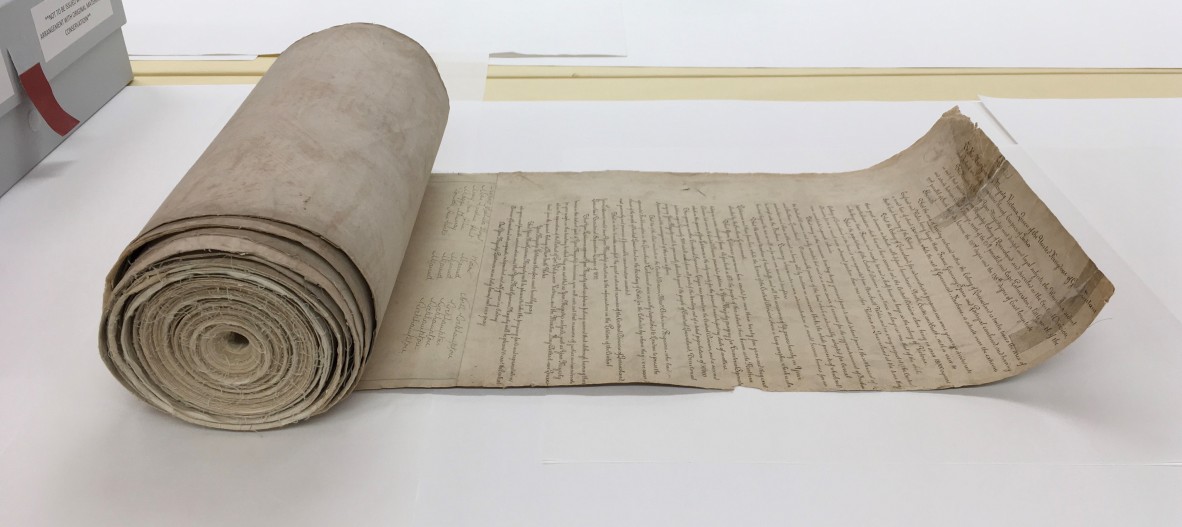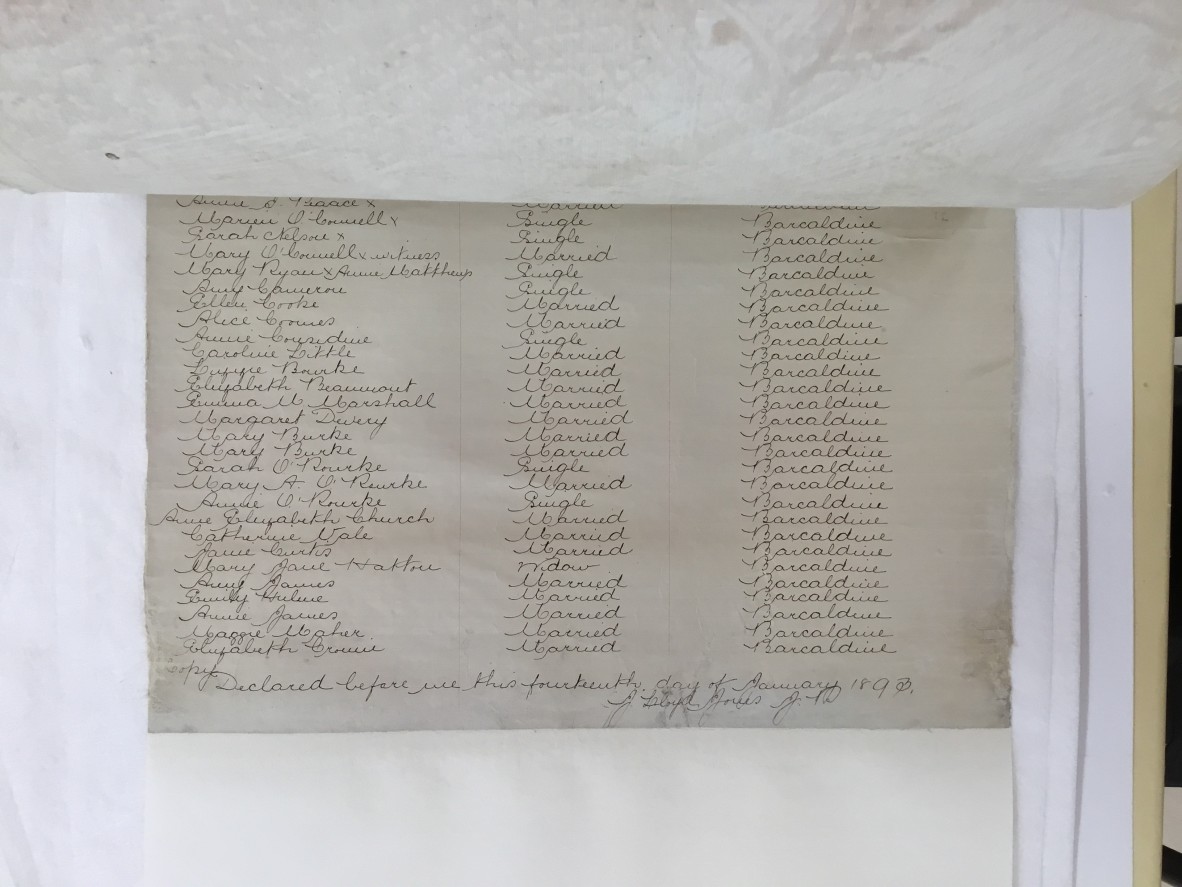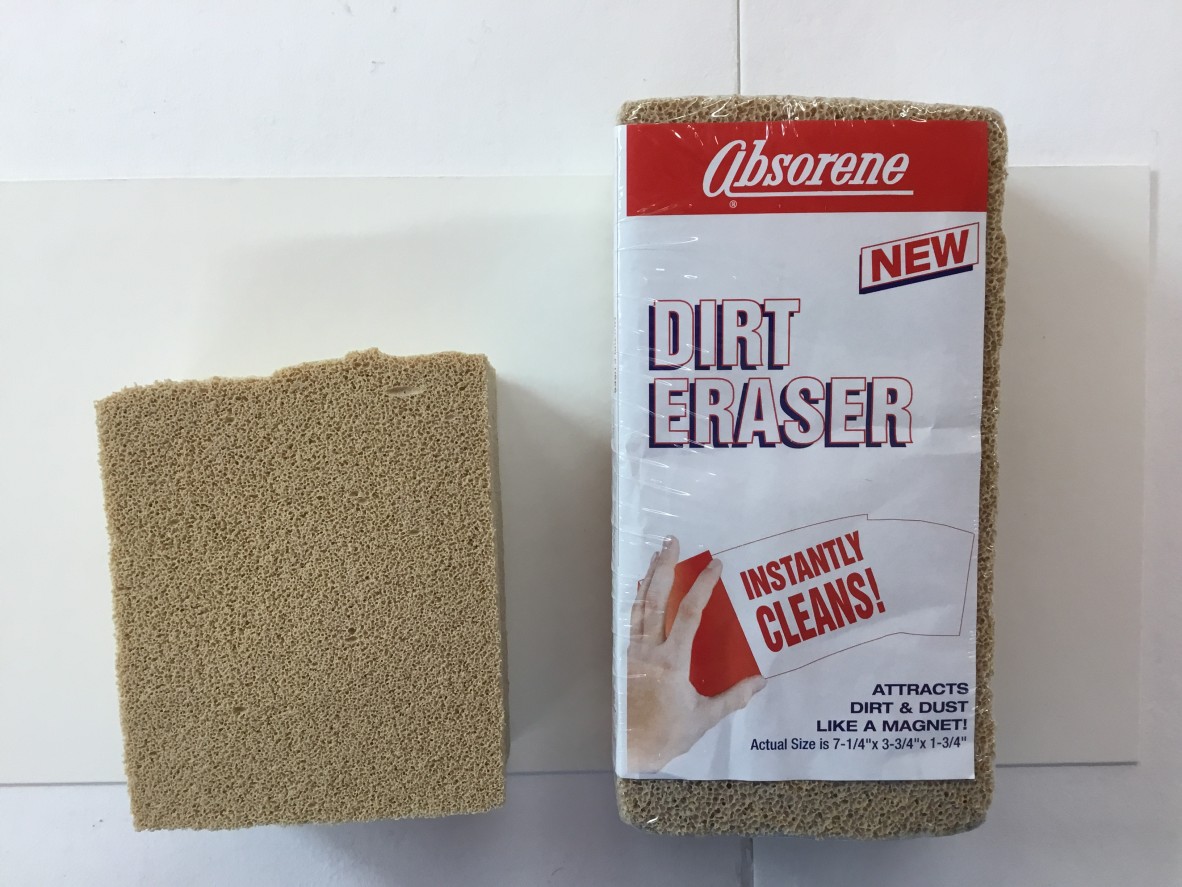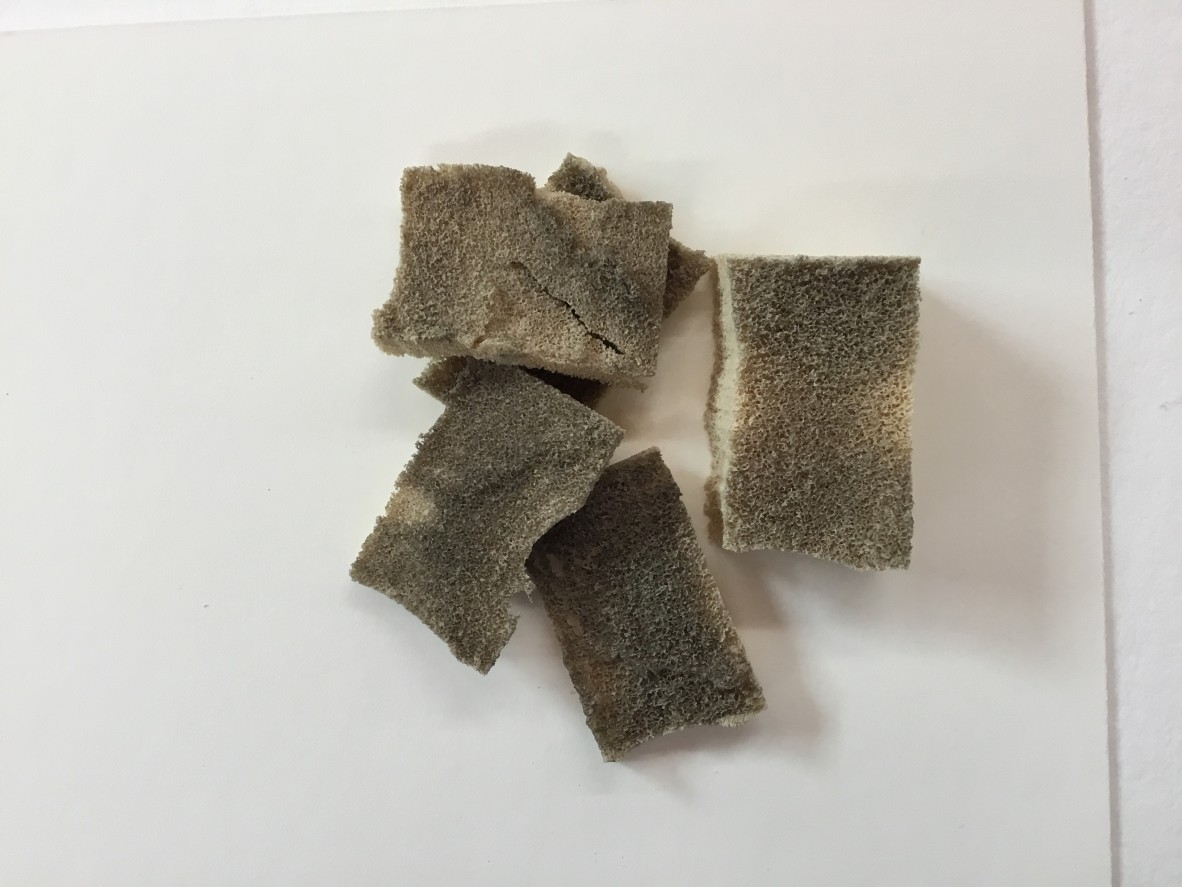What’s the dirt? Cleaning the Petition
By Kelly Leahey, Conservator | 28 April 2023
In a recent blog post, we discussed conservation of the Central Queensland Separation League Petition (the Petition). The blog generated a lot of interest in the treatment process – in particular, about how you clean a dirty scroll. So, in today’s blog post, we will be dishing the dirt…on dirt!
Dirt, what is it?
Have you ever wondered what dirt actually is? Since becoming a conservator this is something I consider frequently. I’ve also discovered that dirt is not as straightforward as I had always assumed. On the one hand, there is the physical material that we call dirt, and on the other hand there is the idea or the philosophy of dirt. Fascinating, right?!
When talking about dirt (or soiling) on an object, this typically refers to a foreign matter that is not part of the original object. Ingrained soiling is trapped in the fabric of an object, while surface soiling sits on the object’s surface. The composition of this soiling might include dust, soil, flakes of skin, hair, textile fibres, soot, grease, living organisms, or salts. Most importantly, ‘dirt’ is a material that is located somewhere it oughtn’t be.
Of course, there are exceptions to every circumstance, and in some instances, soiling may be an integral part of an object’s story. Such a consideration goes to the meaning of the object and the ethics of conservation.

Central Queensland Separation League Petition 1892, before conservation treatment.
To clean, or not to clean?
Conservators are all about the science of cleaning. When looking at dirt on an object, we see matter that is mechanically trapped, electrostatically attracted, or chemically bonded to a surface. We see potential for damage if an object is left uncleaned, and potential for damage related to cleaning itself. Some common cleaning damages include:
- over cleaning, causing mechanical weakness to an object
- rough cleaning, causing mechanical damage
- uneven cleaning, leaving a mottled appearance or halos around media application
- unintentional cleaning, accidentally removing original media or affecting the object’s integrity and/or value (i.e every conservator’s nightmare!!).
As well as cleaning to improve the appearance of an object, we clean to limit or prevent further damage. Dirt is often hygroscopic (attracts moisture) and can be a food source for mould, posing a significant problem for objects made of organic matter (i.e. most things in the State Library collection). Dirt and grime can become acidic as it breaks down causing further deterioration to an object, such as discolouration, staining or embrittlement. This is the kind of damage that may not be immediately eviden, however will become so over time, and is largely irresversible.

The Petition end section before cleaning treatment.

The Petition end section after cleaning treatment.
How did we clean the Petition?
Prior to conservation treatment, the Petition had accumulated 130 years’ worth of dirt. This included surface and ingrained soiling to the front and back throughout.
With all of the above in mind, the goal with cleaning the Petition was to reduce surface soiling to the front and back, in order to improve the appearance prior to digitisation and to extend the life of this very special object. As the Petition is approximately 33-metres long, I wanted to apply a relatively quick and gentle method, with a known and trusted material. Enter the smoke sponge.

Smoke sponge (vulcanized natural rubber).

Pieces of used smoke sponge from the Petition cleaning treatment.
Smoke sponge is frequently used in paper conservation, as it is an effective and gentle cleaner. Pieces are cut from the main block and dabbed or very gently rubbed in one direction along the paper surface. We always test a small patch first, to assess if the cleaning method is suitable for a particular object.
Philatelic Preservation has published a short video on YouTube with a great demonstration of this cleaning technique. See the video Dry cleaning paper with a smoke sponge.
The whole of the Petition was cleaned front and back using Smoke Sponge (yes, it took many hours). This simple, yet effective (and time-consuming) step resulted in a visually lighter and brighter object. Safe reduction of the dirt on this object will help to preserve it for years to come.
Conservation of this collection item was possible thanks to the generosity of the Queensland Library Foundation. The next step will be to digitise and make the content available online.
That’s the down-low on dirt from a conservator’s perspective! In coming weeks, we will be delving deeper into damage and mending. And if you have a special item at home requiring conservation advice, you can contact a Conservator through the State Library Ask Us service.
Kelly Leahey – Conservator, State Library of Queensland
Other related blogs
Comments
Your email address will not be published.
We welcome relevant, respectful comments.